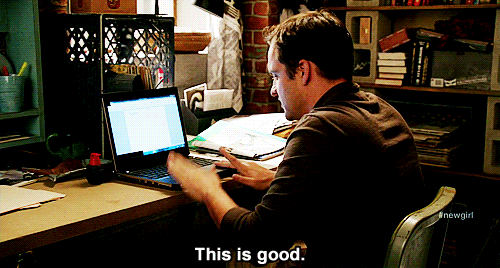Thriller novels, with their heart-pounding suspense and gripping plots, have the power to captivate readers from the first page to the last.
But what separates a forgettable thriller from a page-turner that keeps readers up all night?
Crafting a successful thriller requires a delicate balance of tension, pacing, and character development.
Here are 10 dos and don’ts to consider when writing your next thrilling masterpiece.
The Dos:
1. Develop Complex Characters:
- Do create characters with depth and complexity.
- Do give them flaws, motivations, and conflicting desires.
- Do make readers care about their fates.
2. Build Suspense from the Start:
- Do establish a sense of tension or mystery from the opening pages.
- Do hint at the dangers to come without revealing too much.
- Do keep readers on the edge of their seats with each chapter.
3. Use Pacing to Your Advantage:
- Do vary the pacing to create peaks and valleys of tension.
- Do include moments of quiet reflection to contrast with intense action scenes.
- Do keep the story moving forward to maintain momentum.
4. Create Twists and Turns:
- Do surprise readers with unexpected plot twists.
- Do subvert clichés and tropes to keep the story fresh.
- Do plant clues throughout the narrative that lead to satisfying revelations.
5. Research Thoroughly:
- Do conduct thorough research to ensure accuracy in your writing.
- Do incorporate realistic details to ground the story in reality.
- Do use research to enhance the authenticity of settings, characters, and plot elements.
6. Establish Stakes:
- Do establish high stakes early on to give the story urgency.
- Do make the consequences of failure clear to the characters and readers.
- Do raise the stakes as the story progresses to maintain tension.
7. Create Atmosphere:
- Do use vivid descriptions to evoke a sense of place.
- Do utilize sensory details to immerse readers in the world of the story.
- Do establish atmosphere through setting, weather, and mood.
8. Keep the Reader Guessing:
- Do withhold information strategically to keep readers guessing.
- Do introduce red herrings to mislead and intrigue your audience.
- Do maintain a sense of mystery and uncertainty throughout the narrative.
9. Craft Memorable Villains:
- Do create villains with depth and complexity.
- Do give them clear motivations for their actions.
- Do make them formidable adversaries for your protagonists.
10. Deliver a Satisfying Resolution:
- Do tie up loose ends and unanswered questions by the end of the novel.
- Do provide a resolution that feels earned and satisfying.
- Do leave readers with a sense of closure while still leaving room for interpretation.
The Don’ts:
1. Don’t Rush the Climax:
- Don’t rush through the climax of the story.
- Don’t resolve conflicts too quickly or easily.
- Don’t sacrifice depth and complexity for the sake of a fast-paced ending.
2. Avoid Info-Dumps:
- Don’t overload readers with information all at once.
- Don’t rely on lengthy exposition to explain backstory or world-building.
- Don’t interrupt the flow of the narrative with unnecessary detail.
3. Don’t Neglect Character Development:
- Don’t neglect the development of secondary characters.
- Don’t sacrifice character development for the sake of plot.
- Don’t create one-dimensional characters solely for the purpose of advancing the story.
4. Avoid Predictability:
- Don’t rely on predictable plot twists or clichéd tropes.
- Don’t telegraph your twists too early in the story.
- Don’t underestimate your readers’ ability to see through formulaic storytelling.
5. Don’t Overdo the Violence:
- Don’t rely solely on graphic violence to create tension.
- Don’t include violence for shock value alone.
- Don’t lose sight of the emotional impact of violent scenes on your characters and readers.
6. Avoid Excessive Backstory:
- Don’t bog down the narrative with excessive backstory.
- Don’t feel the need to explain every detail of your characters’ pasts.
- Don’t let backstory overshadow the forward momentum of the plot.
7. Don’t Underestimate the Power of Editing:
- Don’t underestimate the importance of editing and revising your manuscript.
- Don’t be afraid to cut scenes or chapters that don’t serve the story.
- Don’t settle for mediocrity; strive for excellence in every aspect of your writing.
8. Avoid Deus Ex Machina:
- Don’t rely on convenient plot devices to resolve conflicts.
- Don’t introduce new elements or characters at the last minute to save the day.
- Don’t undermine the integrity of your story with unrealistic or contrived resolutions.
9. Don’t Sacrifice Logic for Drama:
- Don’t sacrifice logic or believability for the sake of dramatic effect.
- Don’t rely on improbable coincidences to move the plot forward.
- Don’t overlook inconsistencies or plot holes that may undermine the reader’s immersion in the story.
10. Avoid Rushing the Resolution:
- Don’t rush through the resolution of the story.
- Don’t tie up loose ends too quickly or neatly.
- Don’t leave important questions unanswered or conflicts unresolved.
Crafting a page-turning thriller requires careful attention to detail, skillful execution, and a willingness to push the boundaries of storytelling.
By following these dos and don’ts, you can create a gripping narrative that keeps readers eagerly turning the pages until the very end.
Written a Thriller Novel?
Need Help With Your Creative or Literary Packaging?
Looking to bring your ideas to life with captivating storytelling and imaginative flair?
Whether you need compelling copywriting, engaging written, visual or video content creation, or literary packaging that stands out, I’m here to help.
Let’s collaborate to turn your vision into reality. Reach out to me today to discuss your project and let’s embark on a journey of creativity together!










